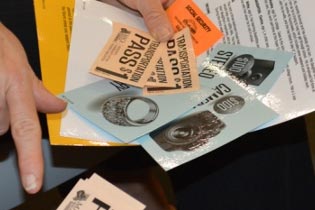What is Community Organizing?
Community organizing is the art of bringing people together on behalf of and/or in response to a common interest. It is used for relationship building and collaboration and is designed to create power in and for a community.
Community organizers provide learning opportunities centered on the realities of poverty at the local level, needs of those living in poverty, and the cost of poverty to individual communities. Through these educational presentations, community members are invited to participate with existing Community Action Team (CAT) projects to develop, enhance, and identify local solutions for the overall causes of poverty within a community.
CMCA Community Organizers
- Audrain County – Mary Rohrbach (MaryR@cmca.us)
- Boone County – Daniel Crasnow (DanielC@cmca.us)
- Callaway County – Kellie Pontius (KellieP@cmca.us)
- Cole County – Stefani Thompson (Stefani@cmca.us)
- Moniteau County & Osage County – Jenn Millard (Jennifermillard@cmca.us)
- Cooper County & Howard County – Cheri Cherry (Cheric@cmca.us)
CAT Project
Community Action Teams are made up of local community members who are dedicated to addressing a local cause or condition of poverty. CATs are designed to be as unique as the communities in which they are found. They should also be flexible enough in their work that local groups may take on the issue originally identified by the local CAT, such as transportation, community economic development, hunger/community gardens, and community involvement by low-income individuals, and health and back to school fairs. CATs are overseen by CMCA community organizers but are run by CAT members.

Poverty Simulations
 Through a three-hour simulation process, participants are assigned a family member role to play as they attempt to meet their family’s basic needs for one month. The month is simulated by four, 15-minute “weeks” during which families must meet all of their financial obligations, gain or maintain employment, ensure that their children are fed, clothed, and educated, meet any emergency situations that may arise and attempt to navigate the web of social service entities that are designed to provide assistance to families in need.
Through a three-hour simulation process, participants are assigned a family member role to play as they attempt to meet their family’s basic needs for one month. The month is simulated by four, 15-minute “weeks” during which families must meet all of their financial obligations, gain or maintain employment, ensure that their children are fed, clothed, and educated, meet any emergency situations that may arise and attempt to navigate the web of social service entities that are designed to provide assistance to families in need.
Although the simulation has the feel of a game, the family scenarios used are based on Missouri families that have been served by Missouri Community Action agencies. Only the names have been changed. The resources, strengths, limitations, and the needs of the families are all based on real life. In addition to family roles, community volunteers — usually individuals currently living in poverty — fill the roles of “community resources”. These resources include an employer, social services, a hospital clinic, a payday lending establishment, a pawn shop, a landlord, a utility company, a bank, a grocery store, a faith organization, a school, a community action agency, a law enforcement officer, and child care or Head Start.
